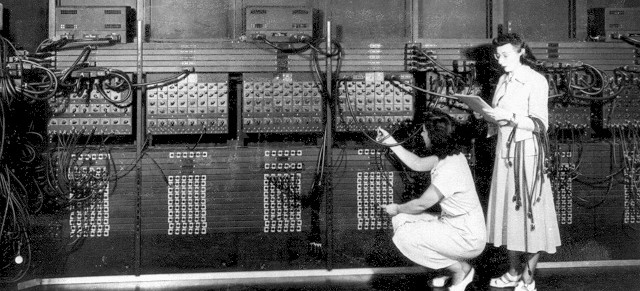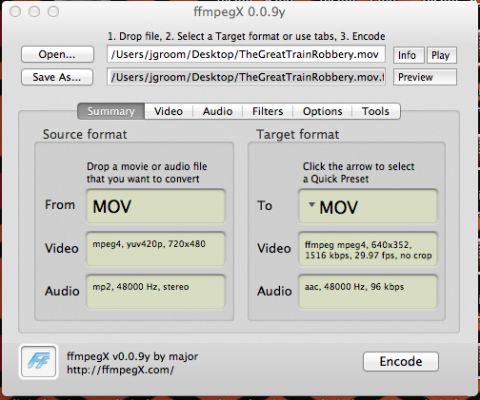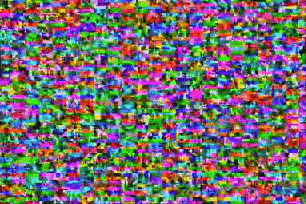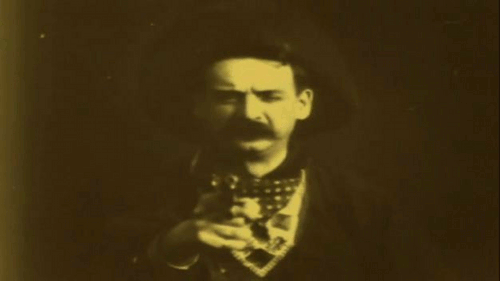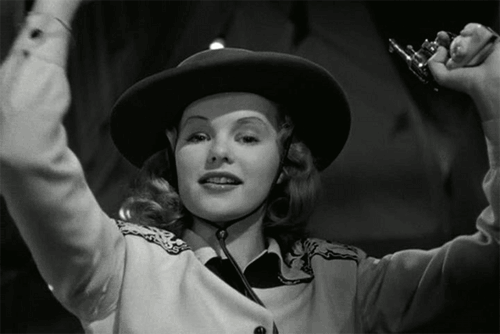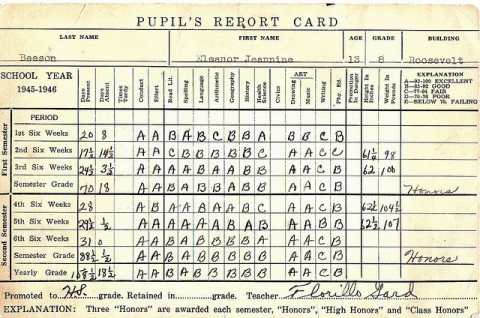
pjern’s “Report Card 1946”
At the beginning of last semester I posted a list of projects DTLT was planning on working through during the Fall 2012 semester. I forgot about it until I was asked to map out how our group plans on assessing the work we do (with that line I am officially the director now) which prompted my return to that post to see what we got done. Turns out we are as awesome as I have been saying all along. I was pretty impressed with how much we accomplished, and started thinking this would be an excellent mechanism for assessment—frame the specific projects you are working on and narrate them openly according to an ongoing examination and reflection of how they further the mission of our group, the university, and public liberal arts more generally. That seems like a meaningful mechanism of reflection and open assessment that others can chime in on, and the process can prove far less bureaucratic and much more authentic—even if it ultimately has to be reformatted as a Word document. Anyway, that’s part of what I will be working towards when re-imagining our group’s assessment, but in the meantime let’s take a look at what we got done last semester.
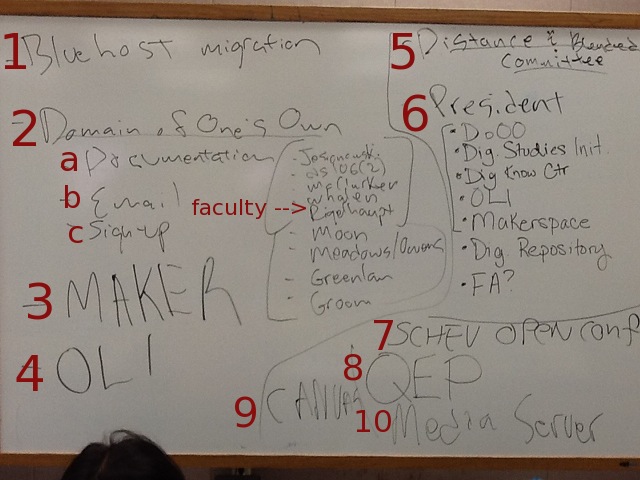
1) Bluehost Migration: A-
Four months ago I noted we had done most of the heavy lifting on this one, but there were still a few left:
We have a few random Bluehost accounts left, but archiving all the work we’ve done with faculty, students and staff over the years is a major accomplishment and one I’m thrilled to almost have behind us. I’m hoping by end of September would be nothing short of awesome.
We didn’t get everything off Bluehost by the end of September because the semester’s rhythm took over. We are currently in the process of transferring all of UMW’s Historic Preservation Bluehost to the Domain of One’s Own server, and plan on getting any last accounts (I can only think of umwhistory.org at thhis point) off Bluehost by no later than this Summer. Archiving all this work has been a bit of work, but so worth it. I’ll give Tim Owens an “A” on this one, I would have to get considerably less because I screwed up and let the umwhisp.net Bluehost account expire in December without moving all the files first—I suck. But that still lands us at an A- because I never suck that bad!
2) Domain of One’s Own: A+
Back in August we were still working out the documentation, announcement email for faculty, and sign-up details. We nailed those early on, then went on to have a pretty awesome semester fleshing this pilot project out as well as getting support from UMW’s President Rick Hurley to move it from pilot into the category of a fully-funded project! Domain of One’s Own goes under the epic win column.
What’s more, this project has enabled DTLT to solidify our working relationship with Mary Kayler, the director for the Center for Teaching Excellence and Innovation, which has been amazing. Mary did the lion’s share of the work putting together an Open Dialogue about the project and we got an amazing turn out of 40-50 faculty and staff at the event, and a month later 29 faculty signed-up to be part of the pilot program we’re running this Spring (more about that shortly).
Additionally, Andy Rush made an awesome video showcasing the culture of innovation at UMW that has allowed for this work to happen. Which, in turn, led to the Chronicle of Higher Education Podcast Tech Therapy featuring the project. En fuego! We have much more to do on this project, and it is anything but finished, but as of now it is extremely exciting! We’ve never worked with 29 faculty on a broad, conceptual project like this. It’s pretty ambitious, but I think there is real excitement and enthusiasm on the part of the community to start playing in this space. It takes the idea of controlling and building your own spaces online to a new scale.
3 Makerspace: A
UMW’s Makerspace, “The Thinklab,” had an awesome coming out semester as well. Tim Owens and George Meadows taught the Makerbots and Mashups course there, and in November there was a 24 Hour Hackathon to get the world out to faculty. Business professor Gayle Brooks used the space to get her students thinking about the implications of this technology on the future of manufacturing. What’s more, UMW’s Art department has their students doing the same for the implications on sculpture, design, and fashion.
The Makespace has already brought us into closer contact with the library staff in just a short 15 week span. And that relationship has only just begun given Andy Rush has done the leg work to get four brand new video work stations for students installed in the library lobby this Spring—with a special thanks to John Morello in the Provost’s Office for making it possible! Overall, between the Makerspace and our ability to get more resources for students to design, create, and build as part of their education at UMW is yet another epic win on our part. And we have only just begun to hear about the possibilities here, consider the surface only scratched. “A” for the Makers!
4 Online Learning Initiative (OLI): A
I’m just coming off an excellent meeting with a faculty member about her upcoming hybrid class for the Online Learning Initiative, so I am pretty excited about this as well. There are six faculty who are working with Martha Burtis, Steve Greenlaw, Mary Kayler, and myself to design and implement and online or hybrid course during the Summer or Fall 2013.
This is another project that got a commitment of funding from the administration, and we’re currently trying to see if we can setup a mentorship program for faculty to build a sense of community for this project. What we realized is faculty learn a lot more from other faculty who’ve been through the process (a benefit of hindsight while moving through our second cohort) so with any extra funding we were considering inviting back previous participants to help mentor new faculty. So, as Martha Burtis suggested, rather than doubling up the number of faculty teaching online, spend time early on building a community of support and discourse around the practice of teaching online from values. I think this approach is in-line with how we’ve been imagining this project from its inception, and right now I think it’s going very well.
As opposed to last semester wherein we spend time with all the faculty talking about the values, the state of online learning, various approaches, tools, etc., this semester we’re gonna have to spend some serious time supporting each of the faculty members as they design their course, but that should be the fun part! To quote, L.L. Cool J: “Hard work pays, we’re getting straight on ‘As’.”
5 Distance & Blended Leaning Committee: F
Not a project but a committee that guides the conversation around online and blended learning at UMW more generally. Did we even meet this semester? I am on the committee but was off the mailing list or something. This committee all but happened without DTLT this semester, and for that I get a big, fat F (there was bound to be one). Time to reconnect with Steve Greenlaw and see what’s going on with this committee.
6 President’s List: A
This list referred to a series of projects from around the university that were recommended to the President to fund moving forward. They included the Digital Studies Initiative, Domain of One’s Own, Online Learning Initiative, Digital Knowledge Center, Digital Repository, etc. It was an ambitious list, and we (the royal “we” not DTLT) did pretty well on the whole. Two projects were officially funded: Domain of One’s Own and OLI. Thanks to the hard work of Jeff McCLurken and Zach Whalen, the Digital Studies Minor was approved by the curriculum committee at UMW. The Makerspace is up and running already, money can always help, but building stuff on a shoestring like DTLT has for years has always been a selling point, and sticking to that philosophy is crucial—at least until we start ordering laser cutters 😉 So, of the six projects we proposed, four are up and running, if not on their way. That’s damn good!
7 SCHEV’s Open Virginia Conference: ?
Back in August I wrote:
UMW will be hosting a Digital Learning Resources conference for state institutions [in Virginia]. A committee run through SCHEV has formed and we will be putting on a conference to showcase the best teaching and learning with technology work happening around the state. The RFP is being reviewed and will be discussed in more detail shortly (it is modelled closely on Open Education call). UMW has gotten permission to host it, and we are working on getting this thing going by Spring Break 2013! I have a lot to do on this very soon, but I am excited about bringing constituents from all the state colleges and universities to have a discussion about how we can share resources.
This is all true, we have the venue, we are working on sponsorships, we have a call for papers, a registration link, and a place to submit proposals (due this Friday!) but we need more proposals and attendees! Right now we have about 100 registrations and 30 proposals in. I was hoping we would have at least 200 registrations and 60 proposals by this Friday. I’m really hoping the folks from at institutions around Virginia step-up and klick in and send folks and ideas to UMW so we can talk have a much needed discussion about how we can share resources for teaching, learning, and technology throughout Virginia. I am afraid of the grade on this one, but only time will tell.
8 Quality Enhancement Plan (QEP): A
DTLT was brought into the development of the QEP at a rather late stage in the discussion. We spent much of last semester (we meaning Martha Burtis 🙂 ) figuring out what the parameters for the plan were, how we could help, and what our role would be. Unlike the resource framework I mentioned we would be building out in August, the QEP is actually a series of modules being created for freshman to enhance their first year experience. Not big fans of modules to begin with here at DTLT, and even lesser fans of their cost, we decided to try our hand at creating an RSA Animated video lessons for our students that we build interaction around in UMW Blogs and/or Canvas. We’re still in the development stage for this pilot, but so far so good. The work is ongoing, and I think the entire committee has a much clearer idea of what we are doing and why. Although, all that said, my work on this project has been marginal at best so I may be confusing or misrepresenting some parts of it. But given the general dread leading up to this project we all felt versus the fact it has become fairly palatable by most of us now, I would give this an A.
9) Canvas: A
We are now deep into year two of Canvas. And once again, no issues to speak of. Lisa Ames has been handling this system brilliantly, and we’re sailing along. You want to see our ongoing updates about Canvas? You can find them all here. I know an LMS is working really well when I don’t have to worry about it 🙂 A
10) Media Server/Kaltura: B+
We still have a Media Server, but it is no longer running the open source version of Kaltura. Tim flipped out and killed it 🙂 More seriously, Tim got fed up with the open source claims on a product that simply want to up sell you to their premium package. It’s bad business. DTLT isn’t only about being the best edtech outfit in the world (though we are that), we are also about principles. And if including spam ads in an open source product to boost your SEO is par for the course, then we won’t be playing golf with your application. Can you dig it?
That said, we are now flying without a media GUI that folks can use easily and integrates with WordPress, but we’re not concerned, we are about to turn up the heat with Wowza (which we just bought a license for and installed on our Media Server) for live streaming and archiving. Next is finding a solution for uploading and embedding media from our Media Server—never fear, we will blaze the path to media El Dorado 🙂 But until then, this is just very good, no excellent here just yet.
Bonus: C+
I added a bonus to my previous post that I would have UMW Blogs integrated with Active Directory by this past December. Not so much. But having said that, I didn’t do it because I did some research first. After consulting with Curtiss Grymala, Luke Walter and Boone Gorges I realized I need some time to test this switchover on a dev server and really prepare for the possibilities given the potential problems with locking folks out of their sites. I heeded their advice, and this semester will start making sure we get UWM Blogs integrated with Active Directory before the first Summer Session. So, not a total fail, but not exceptional either.
That was fun, now to frame out my list for the Spring. Some of which is already here, but some of which is brand new 🙂
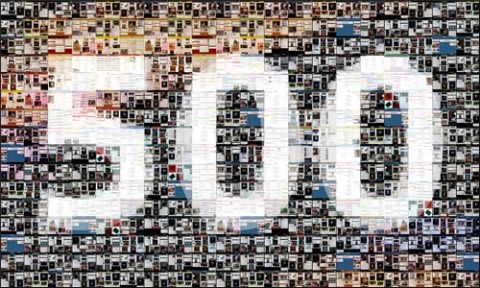 At the beginning of every semester I get a hankering to post something about UMW Blogs. I don’t know why, it has arrived to the point that it’s more like air than technology around campus at this point. We regularly have more than 50 faculty using this platform any given semester as a space to share their teaching out in the open, and after five and a half years of UMW Blogs we now have more than 500 courses on the system (and this doesn’t include courses from the 2007/2008 academic year—we didn’t start tracking them until Fall 08). What’s more, since we started tracking traffic on UMW Blogs in Fall 2009 we have had more than five million unique visitors and almost twelve million page views—two million of those page views came last semester alone.
At the beginning of every semester I get a hankering to post something about UMW Blogs. I don’t know why, it has arrived to the point that it’s more like air than technology around campus at this point. We regularly have more than 50 faculty using this platform any given semester as a space to share their teaching out in the open, and after five and a half years of UMW Blogs we now have more than 500 courses on the system (and this doesn’t include courses from the 2007/2008 academic year—we didn’t start tracking them until Fall 08). What’s more, since we started tracking traffic on UMW Blogs in Fall 2009 we have had more than five million unique visitors and almost twelve million page views—two million of those page views came last semester alone.



